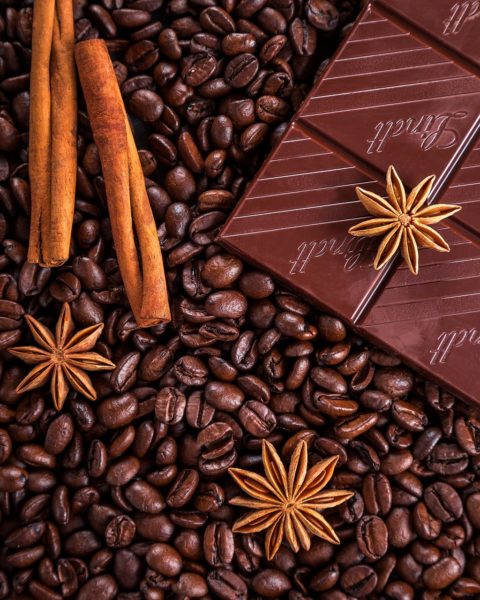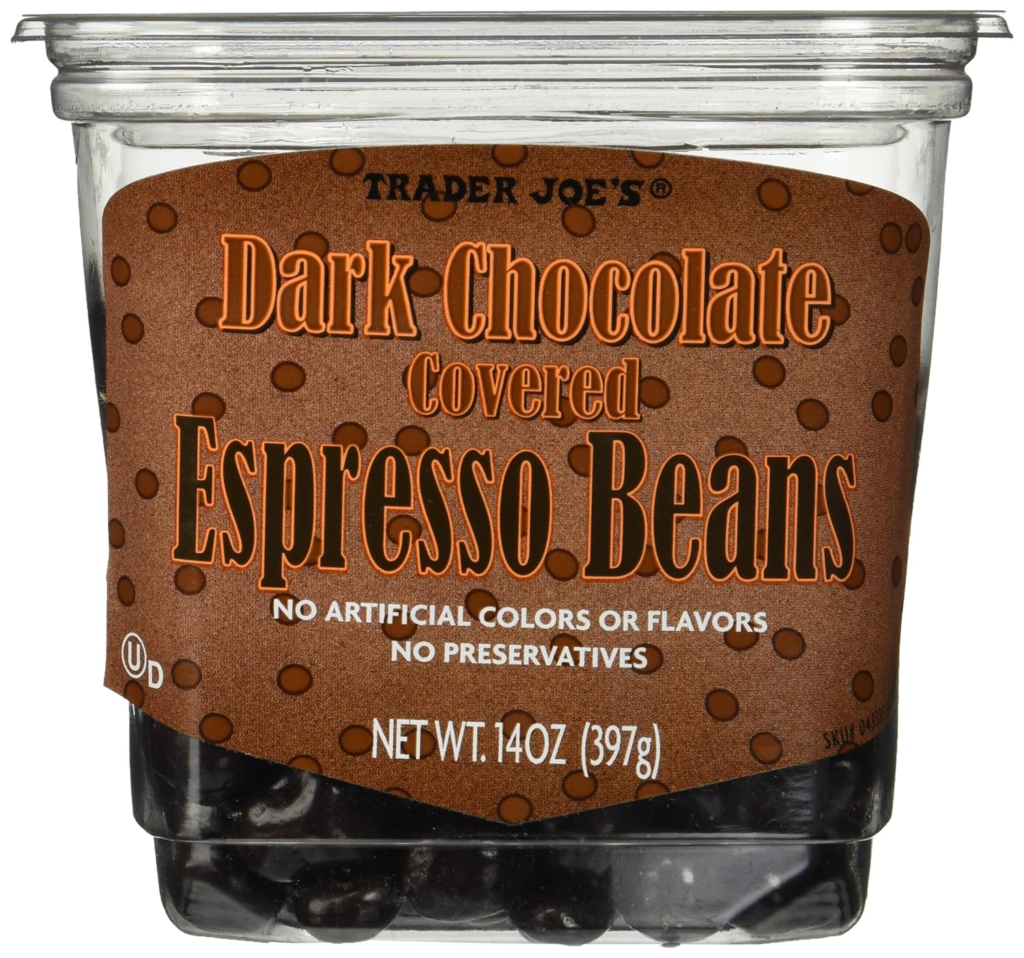Chocolate covered espresso beans are a favorite snack for many. These little chocolatey delights are fully packed with energy and antioxidants. Chocolate and coffee have gone hand in hand for a long time. Many of us just simply love chocolate covered anything. From nuts to fruit, chocolate makes everything better.
However, chocolate-covered espresso beans are a perfect mix of flavors. They’re an addictive little treat that we can’t help munching on. Deliciousness aside, we have to consider the caffeine content as well. Ever wonder how much caffeine in chocolate-covered espresso beans are you ingesting?
Espresso Beans, Defined — Understanding Things
Before we get into the complete details of caffeine content, first we need to understand what espresso beans are. Many people have the misconception that espresso beans and regular coffee beans are different. The truth is, they are not.
They are the same beans. What makes the difference between an espresso bean and a regular coffee bean is the roast. What does this mean?
- Both espresso beans and regular coffee beans are from the same plant
- Espresso beans are (often, but not necessarily) roasted for a longer time to achieve the dark look and strong flavor
- Regular coffee beans are roasted for lesser time, giving them different hues, flavors, and also a higher tanginess than espresso beans
- The level of caffeine in either type of bean does not necessarily depend on the roast, it depends on the type of bean
So keeping this in mind, we can now get to the chocolate-covered espresso beans and their caffeine content.
Do Chocolate Covered Espresso Beans Have Caffeine?
All coffee beans have caffeine content. Chocolate also has caffeine. So if you’ve wondered do chocolate covered espresso beans have caffeine, the answer’s a resounding yes.
On average, chocolate-covered espresso beans yield from 10-14 mg of caffeine. It all depends on the type of chocolate, and the type of espresso bean. Darker chocolates have a higher caffeine content than milk chocolate. Likewise, some companies offer a higher level of caffeine espresso beans.
According to the FDA, the recommended daily maximum caffeine intake is 400 mg a day. An average cup of drip coffee can go as high as 200mg caffeine for 8 fl oz. Similarly, the caffeine content of cappuccino is about 80-100 mg for 8 oz.
Chocolate covered espresso bean caffeine content ranges from 10 mg to 14 mg of caffeine per bean. This means you can safely eat about 30 chocolate covered espresso beans in one day.
However, it is important to be conscious that eating espresso beans, and drinking espresso are two different things. Chewing them, espresso beans will give you a quicker reaction, possibly with caffeine in a higher concentration. This is because the beans are in their entirety.
Drinking an espresso is different because the beans are diluted with water. This gives you a (comparatively) milder kick and takes a while longer to be absorbed by your body. This is why you can safely drink up to 5 cups of espresso or coffee a day.
When it comes to chocolate covered espresso beans, 30 should be the maximum amount of consumption per day. Eating 4-6 chocolate covered espresso beans at a time should be plenty for your needed caffeine boost.
Don’t Forget The Caffeine Content Of Chocolates
Chocolate caffeine content depends on the type and/or brand of chocolate covered espresso bean you purchase. Make sure to read the labels of your chocolate-covered espresso bean package. Different chocolate choices have different caffeine levels.
When doing the math, remember that each chocolate covered espresso bean contains 1-3 mg of caffeine from just the chocolate.
- Dark chocolate contains 12 mg of caffeine per ounce
- Milk chocolate contains 9 mg of caffeine per 1.5 ounces
- White chocolate contains 0 mg of caffeine
This means the darker the chocolate, the more caffeine you are consuming. This is why you must be careful with these tasty treats. Ration them wisely!
Benefits Of Chocolate Covered Espresso Beans
Chocolate covered espresso beans do bring in several health benefits. Many of these obviously overlap with the health benefits of coffee and caffeine in general. As you can guess, the cautions are similar too.
Here are a few benefits you can expect from chocolate coated espresso beans:
- They’re full of nutrients. Since they don’t have to go through grinding and steeping, the overall nutritional value of the beans stays intact. Eating them whole can give you better access to the bean’s nutrients. They are full of antioxidants. Amongst these, chlorogenic acid is often cited for several health benefits.
- They can help reduce the risk of Type 2 diabetes.
- Have inflammation combating properties.
- Could help reduce the risk of cancer.
- Dark chocolate is also rich in antioxidants (flavonoids; found in berries, red wine, onions, kale, etc.)
- Dark chocolate is rich in minerals such as iron, zinc, and magnesium
Nevertheless, please remember that these delicious treats aren’t health supplements or medication. It is important to keep a limit on consumption. It’s quite easy to go chomping on a bag full of these little treats before you know when to stop! As a rule of thumb, keep your chocolate covered bean consumption to 30 beans or less a day.
An Expensive Treat, But Cheaply Homemade
These delicious snacks are readily available from most stores and online retailers. It is very convenient to buy chocolate covered coffee beans and indulge your taste buds. Or you could put your culinary skills into action and make chocolate-covered espresso beans at home. Not only is this a fun activity for a Sunday afternoon, but it is much cheaper than buying from a store. You could save big by going the DIY route.
By making chocolate covered beans yourself, you will:
- Make your chocolate covered coffee beans to fit your taste buds
- Have fun while making them!
Is Decaf An Option For Chocolate Covered Espresso Beans?
Caffeine is a stimulant we often depend on. But it’s important to remember that there must be healthy limits on this stimulant. Although a delicious pleasure, there are some instances where it might be necessary to explore other options. People with the following circumstances should consider lowering caffeine:
- Arrhythmias
- Anxiety attacks/ extreme anxiety
- Insomnia
- Pregnant ladies (and of course, children and teens)
- High blood pressure
When you want to enjoy the flavor and taste of chocolate coated coffee beans but would rather avoid the caffeine, think decaf!
If you’re making the beans yourself, there are plenty of high-quality decaf coffee options available – just remember to buy whole beans. Similarly, pick milk chocolate or white chocolate for the coating. Watch that sugar content too!
Alternatively, when buying from a store, pay special attention to the label. Some companies make specialty decaffeinated chocolate-covered espresso beans. Some companies also offer lower caffeinated espresso beans covered in white chocolate. Although a bit expensive, it is a good alternative for a lower dose of caffeine.
Healthy And Delicious Snacking With Choco Coffee Beans
For a healthy and energetic snack, chocolate covered espresso beans are a lovely pick. The combination of dark chocolate with the roasted-toasted tang of the espresso bean is close to perfection.
Remember how much caffeine is in chocolate-covered espresso beans and keep your consumption of these treats in check. Keep your caffeine intake moderate so that your caffeine levels stay where they should be. But most of all, enjoy!


